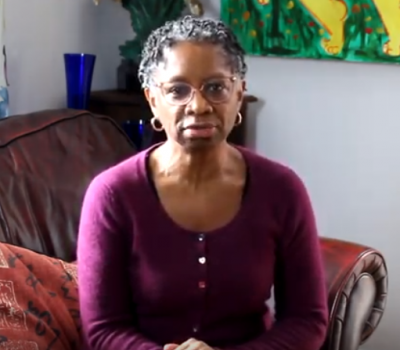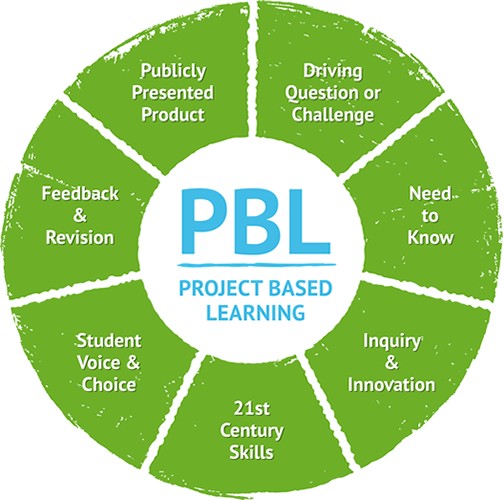

Project based learning is a powerful way to allow students opportunities to learn, build and use a variety of skills in authentic contexts. Schools and educators are doing incredible things for learners by opening the world up to them and providing opportunities to address global issues in deep and meaningful ways. Project based learning can also happen on a smaller and more personalising scale. Projects that allow students to explore who they are and what matters to them can be profound. Whether the inquiry is a global one or one about the world of an individual, project based learning gives students a meaningful platform from which to leap into learning.

Image above courtesy of Buck Institute For Education – http://www.bie.org/
I have used a lot of different types of project based learning in my classroom. They have been rich experiences with a variety of outcomes, but when I think about the most lasting learning, it doesn’t feel quantifiable. If you listen to student reflections on powerful PBL opportunities, many skills are fostered and developed. Above and beyond that, there are intangible but equally compelling aspects that deserve exploration. Some of my student’s most powerful experiences in PBL’s have unmeasurable and immeasurable outcomes. I have used this approach in my classroom through projects such as: The Global Closet, It’s in the Book, The Art of Words, and Yizkor.
For The Global Closet, students had to trace an article of their clothing to the manufacturer, raw materials, workers and the various steps to the student’s purchase. The products was a slideshow or documentary of the clothing item and each student’s evaluation of the conditions under which it was created as well as a geographic mapping. The task was to explore systems that create power and privilege and to determine the degree to which it creates inequities in the world. It was an intense and challenging process for the Grade 8’s in my Geography class (MYP 2 Individuals and Societies) that resulted in impactful learning experiences that also met a bevy of curriculum expectations. There was no measure for how this new thinking impacted the ways they watched the news, made future purchases or wondered about power and privilege.
It’s in the Book was a critical analysis of textbooks. It allowed us to examine different texts for features such as font, size and layout. The history project used the expectations from the Ontario Curriculum, but what resulted was went beyond that. It created an avenue for critical researching and triangulating data, taught to help students ensure accuracy in a time of fake news and too much information. It went from an investigation through media literacy of the messages in the primary and secondary resources used to support the text to the co-construction of the success criteria for a textbook geared to modern Grade 8 learners. The project culminated in a shared digital textbook chapter written for a Grade 8 audience and distributed to other classrooms and educators for feedback. At a time when African slaves were called “workers” in one text, and Israel was wiped off a map in a few publications, it seemed particularly relevant. This PBL showed truly excellent collaborations, improvement from learning and reflection, and a lot of critical thinking. There is no way to know how that critical lens transferred to other texts and real-world scenarios.
The Art of Words was an integrated Visual Art and Language Arts unit. The students were learning about painting strokes and styles in Art while I was teaching poetic devices and literary tools in English. After exploring a variety of poetic styles and genres, the students were tasked to paint on a canvas and write the poem that was reflected in their work. On Arts Night at our school, the students shared their pieces as a gallery and recited their poems to an audience of family, teachers, and friends. The Art of Words evolved from a casual conversation between teacher in the hallway to becoming a regular part of the fabric of the school for a few years. Did it help them look more deeply into paintings or poetry? Did it change they way they thought about the disciplines because they were integrated? Did their joy and sense of accomplishment translate beyond the unit?
The Yizkor Project, which means I Will Remember in Hebrew, was a deeply meaningful and powerful way to explore The Holocaust. Students curated a museum exhibit based around the history of an artifact of their choosing. It ranged from topics such as Propaganda, Signs and Symbols, Hidden Children, Holocaust Memorials Around the World, The Children’s Art of Terezin, Kristallnacht and more. Teaching Holocaust with an audience in mind simultaneously takes students on a learning journey while allowing them to build schema for what is appropriate to show and share with Grade 5’s and up, with the most respectful intentions and an elevated sense of purpose.
The Yizkor Project was an integrated unit for Grade 7’s in Language and Literature (English)and Individuals and Societies (History/Social Studies) culminating on Holocaust Memorial Day. Their Yizkor Museum was an exhibit open to the students, staff, family and guests. It is a Jewish tradition to place a stone on a grave in memorial, so there were rocks in a bowl as people entered the gallery, and they were asked to place one on each memorial that spoke to them. This interactive gallery context gave the learners a chance to see how emotion can be evoked while also sharing history. The piles of rocks were also powerful markers of their inaccessible achievements in that realm. What will they do with their sense of empathy. How will this kind of historical learning impact how they look at other genocides? Will they wonder about other curated exhibits because of this project?
Those are a few of the project based learning units that I have facilitated in the last 5 years. As well, all of my Building Outside the Blocks Projects (BOBs) fall under the PBL umbrella. Instead of using class time to teach and build, respond and iterate, students do most of the work for the projects at home. Many curriculum expectations can be addressed when planning a BOB Project, with additional outcomes of autonomy, connection and community. While skill building can come through responsive explicit project-related instructions, most of the deep and hard-to measure aspects comes from the individual experience of students immersing themselves in the process and results of their projects. Learning content, concepts and skills are great outcomes of project based learning, and often great sources of assessment. Some additional outcomes include a feeling of self-worth, a visceral sense of success in school, a feeling of connectedness to oneself and others and even a feeling of self direction that feeds autonomy. How can those things be assessed?
Many BOBs take students on a self inquiry. There is no visible baseline for a student’s sense of self, but there is some evidence that students show in subtle ways and, sometimes, even communicate through reflection. It can be comment that shows metacognitive learning like: “Next time, I will show improvement in my planning skills by meeting all mini deadlines more consistently,” or “I am grateful for this time to explore my thinking and share who I am with the class in way that was fun and meaningful.” If you have ever infused your Middle School classroom with ways to build your students’ senses of self, it’s palpable but not really definable.
Because project based learning is an avenue to many destinations and only some can be landmarked as you set out on your journey. Some horizons, however, are too open and vast for definition. There are so many possible effects of project based learning that can’t be evaluated. In the most general terms, they are the invisible experiences of learners through the projects for which there is no real gauge beyond the insights or reflections before, during and after students immerse themselves in their work, never mind the long term impact of the essential and transferable learning skills. Some of those connected aspects also include the impact of voice and choice, the development of autonomy and the ever-important fostering of self concept.
Those are only some of the un-measurable and immeasurable results of project based learning. Aren’t those reasons alone worth taking a step into PBL?
Check out a great PBL conversation with a panel of ONedMentors on VoicEd Radio.
You must be logged in to post a comment.
Hello, Nice post! btw that green diagram is originally from the Buck Institute for Education – somebody altered it and put it on social media/web several years ago. Please give us credit /citation, thanks. We have an updated diagram of the Essential Project Design Elements if you’d like to replace the old version — I can email it to you.